-
Yeast i wine ( USA version)
Sorry for my bad english : i have the same in frenchThere are two ways to make wine : with spontaneous winemaking using indigenous- natural- yeast's grapes.or added yeast : they are called selected laboratory yeast , sometimes I call chemical in English. I am often criticized. Conventional winegrowers and winemakers tell me that laboratory yeasts are selected from natural yeasts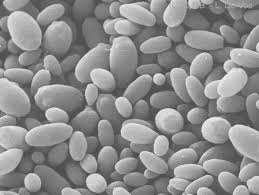 Natural or wild yeaststhey are on the grape skin , but they can be in the cellar. This type of winemaking is called spontaneous. It is delicate . Yeast can be good or bad depending on the manipulations of winemakers. the advice of my natural winegrower friends:- The most important is a very clean cellar and organic farming without chemical- make a leaven to start vat of wine : take a few grapes crushed in a basket.I still see one of my friends putting the seal in the sun covered with a broken window in order to increase the speed of fermentation. For another , dice that a vat was starting, claude courtois took a basket of wine from vat started.And he put this basket of started wine in another vat. the second vat was starting like that.
Natural or wild yeaststhey are on the grape skin , but they can be in the cellar. This type of winemaking is called spontaneous. It is delicate . Yeast can be good or bad depending on the manipulations of winemakers. the advice of my natural winegrower friends:- The most important is a very clean cellar and organic farming without chemical- make a leaven to start vat of wine : take a few grapes crushed in a basket.I still see one of my friends putting the seal in the sun covered with a broken window in order to increase the speed of fermentation. For another , dice that a vat was starting, claude courtois took a basket of wine from vat started.And he put this basket of started wine in another vat. the second vat was starting like that.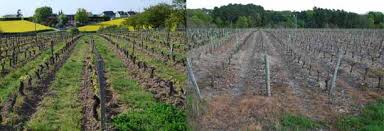 yeast added :I have found written before the war 14 explaining that you can use yeast laboratories to develop the wine. Yeasting is even normal for winemaker and winegrower.The climax of chemicals was late 70s , they replaced the horse and plow. The concerns of chemicals: they kill microbial life , microbial life and without fermentation does not start. Winemakers and winegrowers have resorted to selected laboratory yeasts , that is an immediate recourse to a final solution. Why I did not find a recipe not to add yeast and encourage the winemaker not yeast : it is simply there is too much money at stakeIn the sites I come , it is always advisable to be inoculated because you can get harmful and unpleasant odors .... A packet of yeast costs between 20 euros and 30 euros per kilo, it takes 40 grams per hectolitre / liter of wineabout 1 kilo of yeast to 22 hectoliters of wine2,000 tons of yeast for 40 million hectoliters of wineAveraging the spending on chemical for vines:465,483,000 euros is spending approximatelycalculating expenses yeast added2,000 tons of yeast for 40 million hectoliters: 40 million eurosHere is a simple example to find on a site ;
yeast added :I have found written before the war 14 explaining that you can use yeast laboratories to develop the wine. Yeasting is even normal for winemaker and winegrower.The climax of chemicals was late 70s , they replaced the horse and plow. The concerns of chemicals: they kill microbial life , microbial life and without fermentation does not start. Winemakers and winegrowers have resorted to selected laboratory yeasts , that is an immediate recourse to a final solution. Why I did not find a recipe not to add yeast and encourage the winemaker not yeast : it is simply there is too much money at stakeIn the sites I come , it is always advisable to be inoculated because you can get harmful and unpleasant odors .... A packet of yeast costs between 20 euros and 30 euros per kilo, it takes 40 grams per hectolitre / liter of wineabout 1 kilo of yeast to 22 hectoliters of wine2,000 tons of yeast for 40 million hectoliters of wineAveraging the spending on chemical for vines:465,483,000 euros is spending approximatelycalculating expenses yeast added2,000 tons of yeast for 40 million hectoliters: 40 million eurosHere is a simple example to find on a site ;What strains of wine yeast choose?
There are a large number of selected yeast strains (> 250 strains).
The choice of yeast used must be reasoned in terms of:
type yeasting: yeast starter (quick fermentation), specific, regional, resumed fermentation, fermentation
its ability to reveal or aromatic compounds such as polyphenols extract
the nature of the grape and grape must (red, white, rosé)
the style of wine (young wine, care ...)
of the desired fermentation temperature
the resistance to alcohol and sugar
To help you in your choice, "Selection and use of microorganisms in winemaking," was recently adapted online and identifies the main strains available on the French market.
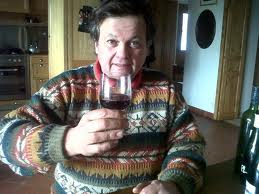 Notice tastingthe noseI also see both professionals and novices do the same mistake during tasting: a lot of people forget the first nose and second nose waving immediately glass. The big difference between wine fermented with indigenous yeast and a wine fermented with selected yeast is in the nose and in rétro-olfaction.The retro-olfaction:IT is the return aromas after swallowing. It is important to take in air at the same time that the wine. With this practice, you play with the atoms of wine and you boost flavors in retro-olfaction. When you swallow the wine, you count the seconds during which you have the aromas after the tasting.
Notice tastingthe noseI also see both professionals and novices do the same mistake during tasting: a lot of people forget the first nose and second nose waving immediately glass. The big difference between wine fermented with indigenous yeast and a wine fermented with selected yeast is in the nose and in rétro-olfaction.The retro-olfaction:IT is the return aromas after swallowing. It is important to take in air at the same time that the wine. With this practice, you play with the atoms of wine and you boost flavors in retro-olfaction. When you swallow the wine, you count the seconds during which you have the aromas after the tasting.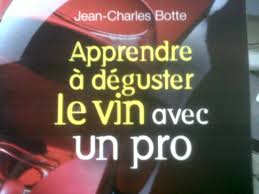 Experiencesi already hear winemakers and wine journalists tell me : « it ‘important to have wine without défect.When i smell in many different wine the same aromas like in Chablis or in Sancerre I'm bored.... You do not believe me ? . Many clients tell me , "the wines you offer us are different from others, they have character . The flavors are always versatile". Yes the wine is not coca-cola .... But it is difficult to do wine with indigenous yeasts with or without sulfur . The winemaker is a tightrope walker , he is not entitled to the irregularity or inaccuracy . His wine cellar must be clean, smooth and accurate . One year ago, I have had a great experience with winemaker Jacques Caroget specialist without sulfur. At the end of the tasting, wine bottles half empty was together on one table. It takes 2 glasses and gives me and tell me you're coming with me . So in this organic winefare, i was on my planet ..... and that day I didn t say a word , I have listened to the master." You feel the taste of pee mouse , it's a winegrower who wanted to make wine without sulfur, hygiene in the cellar isn't good ; it is sufficient to add sulfur . And this wine is corky nose . This red has been harvested with botrytis. That of before , it is corky taste in the mouth : either is a bad yeast or bad bacteria". For a quarter of an hour I learned a lot ...... Then we finish on a magnum ." For this one is against law, balanced with just a little oxidation on the nose that gives it charm , as our white hair. That there is a great natural wine as I like ... I do not know this winegrower but it is beautiful Chinon . "At a tasting of november in Norway, there were many classic wines except a spiritual Italian wine. The white from this winegrower was very mineral … the retro-olfaction was long . I tasted the red .... The bottle was almost empty . I smell like cork in final of the mouth. I asked to the lady to open an another bottle. the second was mineral and better . Another experience I tasted wine without sulfur from a Spanish winemaker that I know and that I esteem. The wine was mineral but in a middle the same problem : a corky taste .... I think that is the irregularity of the winemaker who gives this problematic side. you have two solutions : bacteria or bad yeast.Precision, cleanliness, speed of fermentation are the key to the success of spontaneous fermentation.It is why I ' m in favor for a school winemaking indigenous yeasts made by natural but intrangisant winemakers like Michel Augé or jacques Carroget.
Experiencesi already hear winemakers and wine journalists tell me : « it ‘important to have wine without défect.When i smell in many different wine the same aromas like in Chablis or in Sancerre I'm bored.... You do not believe me ? . Many clients tell me , "the wines you offer us are different from others, they have character . The flavors are always versatile". Yes the wine is not coca-cola .... But it is difficult to do wine with indigenous yeasts with or without sulfur . The winemaker is a tightrope walker , he is not entitled to the irregularity or inaccuracy . His wine cellar must be clean, smooth and accurate . One year ago, I have had a great experience with winemaker Jacques Caroget specialist without sulfur. At the end of the tasting, wine bottles half empty was together on one table. It takes 2 glasses and gives me and tell me you're coming with me . So in this organic winefare, i was on my planet ..... and that day I didn t say a word , I have listened to the master." You feel the taste of pee mouse , it's a winegrower who wanted to make wine without sulfur, hygiene in the cellar isn't good ; it is sufficient to add sulfur . And this wine is corky nose . This red has been harvested with botrytis. That of before , it is corky taste in the mouth : either is a bad yeast or bad bacteria". For a quarter of an hour I learned a lot ...... Then we finish on a magnum ." For this one is against law, balanced with just a little oxidation on the nose that gives it charm , as our white hair. That there is a great natural wine as I like ... I do not know this winegrower but it is beautiful Chinon . "At a tasting of november in Norway, there were many classic wines except a spiritual Italian wine. The white from this winegrower was very mineral … the retro-olfaction was long . I tasted the red .... The bottle was almost empty . I smell like cork in final of the mouth. I asked to the lady to open an another bottle. the second was mineral and better . Another experience I tasted wine without sulfur from a Spanish winemaker that I know and that I esteem. The wine was mineral but in a middle the same problem : a corky taste .... I think that is the irregularity of the winemaker who gives this problematic side. you have two solutions : bacteria or bad yeast.Precision, cleanliness, speed of fermentation are the key to the success of spontaneous fermentation.It is why I ' m in favor for a school winemaking indigenous yeasts made by natural but intrangisant winemakers like Michel Augé or jacques Carroget.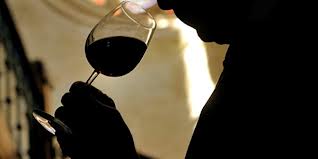 characteristic of wine with added yeastsNose :The aromas of wines selected laboratory yeasts are the easiest and most recognizable flavors. Some examples :orange synthetic : This aroma where you found in orange candy tastes . I often find in Chablisred synthetic fruits ; tagagada strawberry of candy haribo I find in other wines of Beaujolais but alsolicorice synthesis : coils candy haribo especially for retro -olfactionbrioche and bread : champagneA wine with added yeast : first nose and second nose are similar. The nose is often aromatic and open.defect and quality of eachThe retro -olfaction : it lasts for the best in maximum 40 seconds. You often feel for red wine a return tannins and licorice. I can sometimes find a semblance of minerality on the white but never in red wine . Often there are not retro-olfaction .
characteristic of wine with added yeastsNose :The aromas of wines selected laboratory yeasts are the easiest and most recognizable flavors. Some examples :orange synthetic : This aroma where you found in orange candy tastes . I often find in Chablisred synthetic fruits ; tagagada strawberry of candy haribo I find in other wines of Beaujolais but alsolicorice synthesis : coils candy haribo especially for retro -olfactionbrioche and bread : champagneA wine with added yeast : first nose and second nose are similar. The nose is often aromatic and open.defect and quality of eachThe retro -olfaction : it lasts for the best in maximum 40 seconds. You often feel for red wine a return tannins and licorice. I can sometimes find a semblance of minerality on the white but never in red wine . Often there are not retro-olfaction .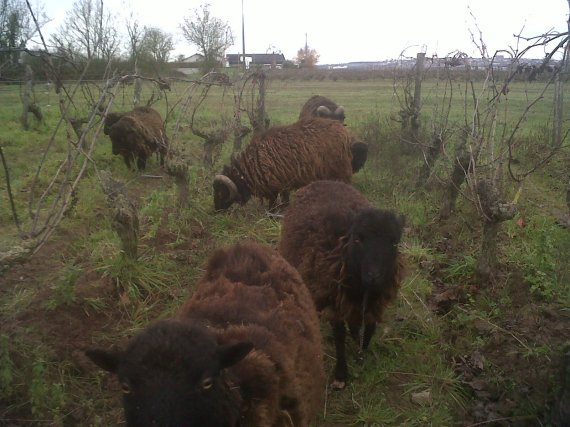 An experience :the best way : smell the first nose without moving of glass, smell the second nose with moving of the glass. When you taste, you take the wine with air. Like that you play with atome of wine. After your tasting, you will have return of aromas : retro-olfaction.
An experience :the best way : smell the first nose without moving of glass, smell the second nose with moving of the glass. When you taste, you take the wine with air. Like that you play with atome of wine. After your tasting, you will have return of aromas : retro-olfaction.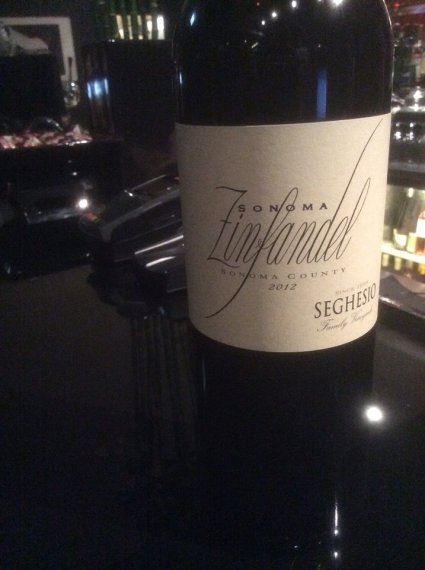
Zinfandel 2012 Seghesio Sonoma county
Ruby semi-intense
the nose is semi opend, aromas are vanilla-oak- and licorice. i smell just a few sulfur. Te first nose and second nose are the same.
the attack of the mouth is ample, the middle of palate is concentrated and long. the tannins are present a little bit on my tong.
the retro-olfaction isn’t present.
this wine is from buccal kind. it is robust classic, a few standard but pleasant with tannins. We can keep this bottle or drink now. I don't feel the alcool of 15°.
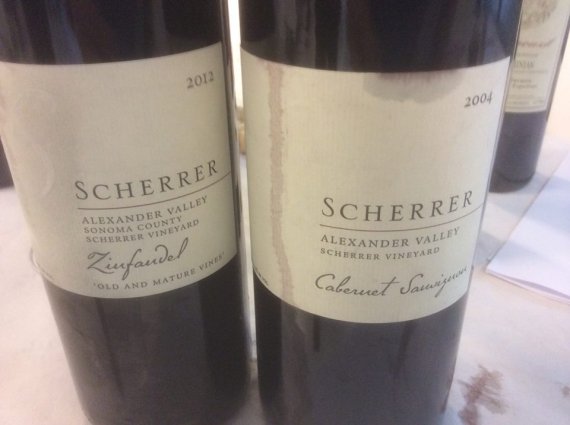
Zinfandel 2012 Sherrer estate, Alexander valley, Sonoma county (n°vinmonopolet 1777001)
ruby semi-intense
the nose is pure, discreet and complex - red fruit and mint
The attack is unctuous. The middle is ample, long, concentrated and suave. the aromas are jammy and eau de vie. The retro-olaction is long during 4 minutes : herbaceous, a bit oak, mineral and licorice. This wine is more complex and difficult to taste, but it is very convincing with a long retro-olfaction. I recommend to open the wine before one day or keep this wine during 3 years. The next day, the wine is opened with aromas of kirsh, the middle is more round, ample, long, a bit warm with aromas of eau de vie and red fruit. You have nice balance between tanin and palate. The retro-olfaction is long with fruit,licorice a bit minerality. Great wine for me.
The same grape, the same county, the same vintage....but two different winemaking. The first wine, the winegrower uses added yeast, the second , the winegrower uses natural yeast. If you are not sensitive about that, you can focus just on retro-olfaction and you count 1,2,3....And you will realize for the first wine, the retro-olfaction is short. The retro-olfaction of second wine is very long.
Conclusion: currently diplomas tasting - wset or master of wine-, they do not make the difference between a wine with wild yeasts and a wine with added yeast.A wine from the Gamay , riesling, or chardonnay grape should have this taste, this aroma . For me, when the winemaker uses added yeast. I think he promotes variety. Conversely, when the winemaker works with natural yeasts he promotes mineral and retro-olfaction that is the terroir mark of the region. The recognition of these two schools of wine would be a good benefit to the world of wine in France, and call into question many ideas arrested. Simply a revolution would start ..... The future will tell us.Jean-Charles botte november 2014

